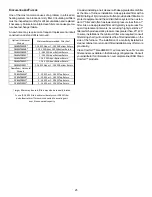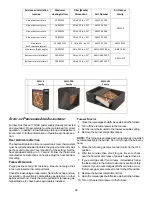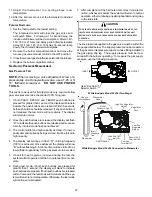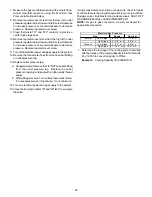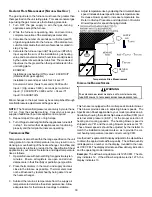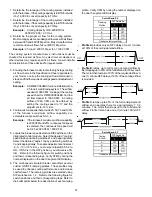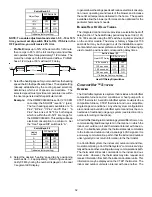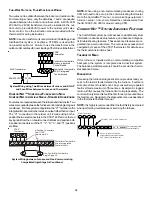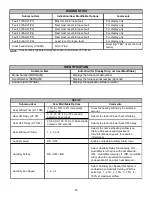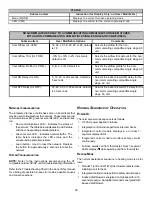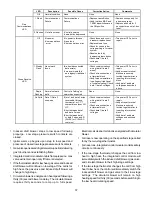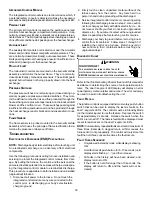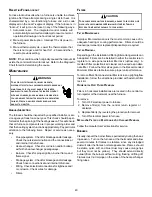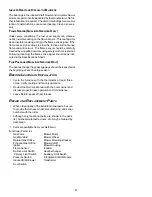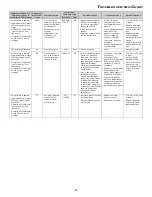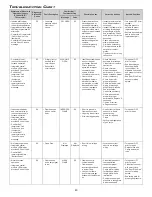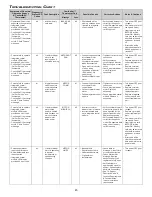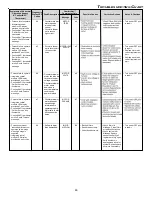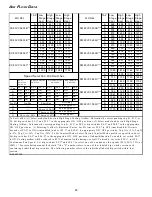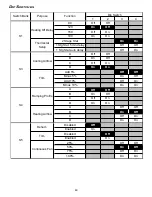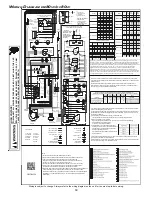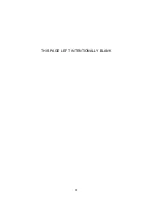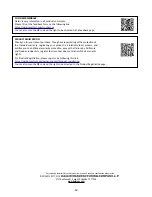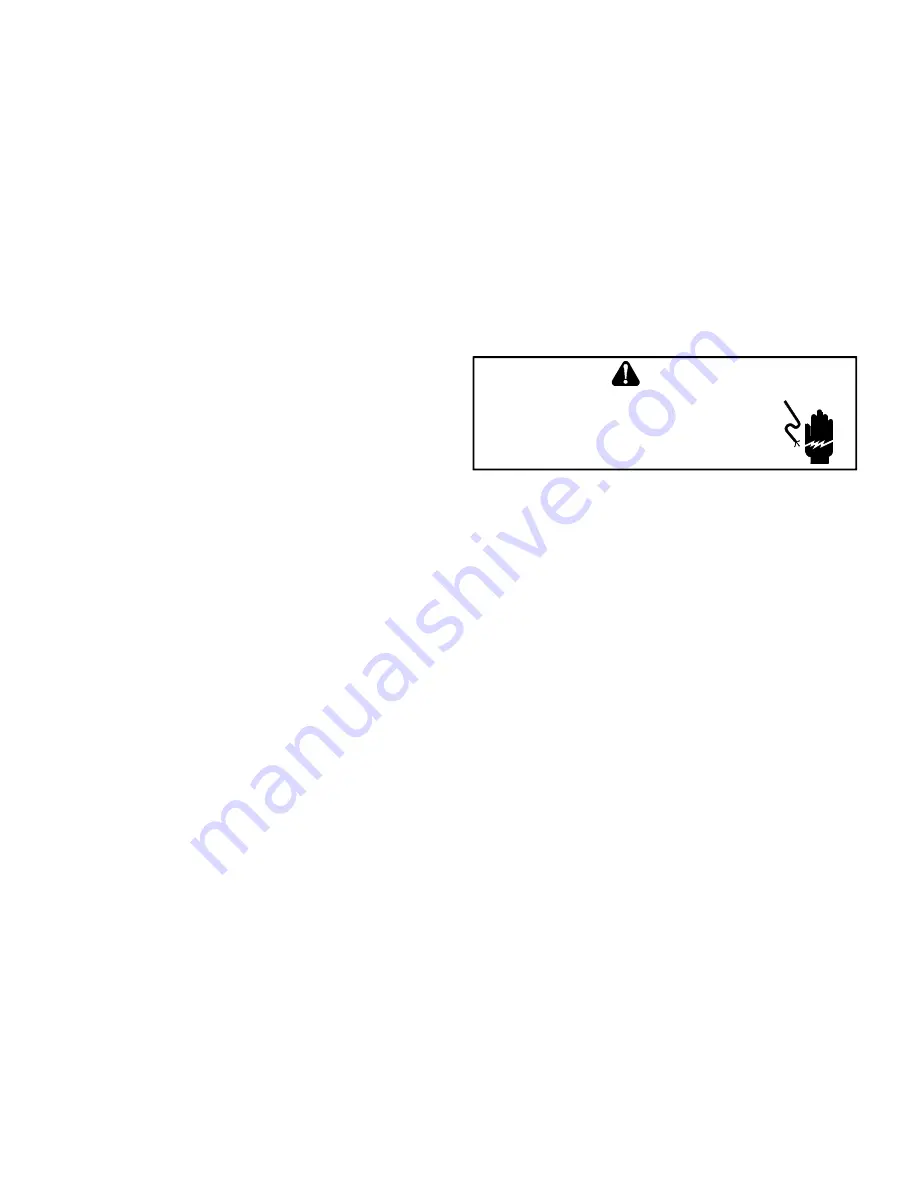
39
I
NTEGRATED
C
ONTROL
M
ODULE
The integrated control module is an electronic device which, if
a potential safety concern is detected, will take the necessary
precautions and provide diagnostic information through an LED.
P
RIMARY
L
IMIT
The primary limit control is located on the partition panel and
monitors heat exchanger compartment temperatures. It is a
normally-closed (electrically), automatic reset, temperature-ac-
tivated sensor. The limit guards against overheating as a result
of insufficient conditioned air passing over the heat exchanger.
A
UXILIARY
L
IMIT
The auxiliary limit controls are located on or near the circulator
blower and monitors blower compartment temperatures. They
are a normally-closed (electrically), auto-reset sensors. These
limits guard against overheating as a result of insufficient con-
ditioned air passing over the heat exchanger.
R
OLLOUT
L
IMIT
The rollout limit controls are mounted on the burner/manifold
assembly and monitor the burner flame. They are normally-
closed (electrically), manual-reset sensors. These limits guard
against burner flames not being properly drawn into the heat
exchanger.
P
RESSURE
S
WITCHES
The pressure switches are normally-open (closed during op-
eration) negative air pressure-activated switches. They moni-
tor the airflow (combustion air and flue products) through the
heat exchanger via pressure taps located on the induced draft
blower and the coil front cover. These switches guard against
insufficient airflow (combustion air and flue products) through
the heat exchanger and/or blocked condensate drain condi-
tions.
F
LAME
S
ENSOR
The flame sensor is a probe mounted to the burner/manifold
assembly which uses the principle of flame rectification to de-
termine the presence or absence of flame.
T
ROUBLESHOOTING
E
LECTROSTATIC
D
ISCHARGE
(ESD) P
RECAUTIONS
NOTE:
Discharge body’s static electricity before touching unit.
An electrostatic discharge can adversely affect electrical
components.
Use the following precautions during furnace installation and
servicing to protect the integrated control module from dam-
age. By putting the furnace, the control, and the person at the
same electrostatic potential, these steps will help avoid expos-
ing the integrated control module to electrostatic discharge.
This procedure is applicable to both installed and uninstalled
(ungrounded) furnaces.
1. Disconnect all power to the furnace. Do not touch the
integrated control module or any wire connected to the
control prior to discharging your body’s electrostatic
charge to ground.
2. Firmly touch a clean, unpainted, metal surface of the
furnace away from the control. Any tools held in a
person’s hand during grounding will be discharged.
3. Service integrated control module or connecting wiring
following the discharge process in step 2. Use caution
not to recharge your body with static electricity; (i.e., do
not move or shuffle your feet, do not touch ungrounded
objects, etc.). If you come in contact with an ungrounded
object, repeat step 2 before touching control or wires.
4. Discharge your body to ground before removing a new
control from its container. Follow steps 1 through 3 if
installing the control on a furnace. Return any old or
new controls to their containers before touching any
ungrounded object.
D
IAGNOSTIC
C
HART
HIGH VOLTAGE !
T
O
AVOID
PERSONAL
INJURY
OR
DEATH
DUE
TO
ELECTRICAL
SHOCK
,
DISCONNECT
ELECTRICAL
POWER
BEFORE
PERFORMING
ANY
SERVICE
OR
MAINTENANCE
.
WARNING
Refer to the
Troubleshooting Chart
at the end of this manual for
assistance in determining the source of unit operational prob-
lems. The dual 7-segment LED display will display an error
code that may contain a letter and number. The error code may
be used to assist in troubleshooting the unit.
F
AULT
R
ECALL
The ignition control is equipped with a momentary push-button
switch that can be used to display the last six faults on the
dual 7-segment LED’s. The control must be in Standby Mode
(no thermostat inputs) to use the feature. Depress the switch
for approximately 2 seconds. Release the switch when the
LED’s are turned off. The last six faults will be displayed most
recent to least recent on the dual 7-segment LED’s.
NOTE:
Consecutively repeated faults are stored a maximum of
three times. Example: A clogged return air filter causes the
furnace limit to trip repeatedly. The control will only store this
fault the first three
consecutive
times the fault occurs.
F
AULT
C
LEAR
S
EQUENCE
:
•
Only allowed in standby mode, while display is showing
ON.
•
Hold fault recall push-button for 5-10 seconds (until
display starts flashing “---”) and then release.
•
All faults in the history will have been cleared, and
display returns to ON.
•
If the button is held for longer than 10 seconds, the
display will return to ON and the faults will not be
cleared.

